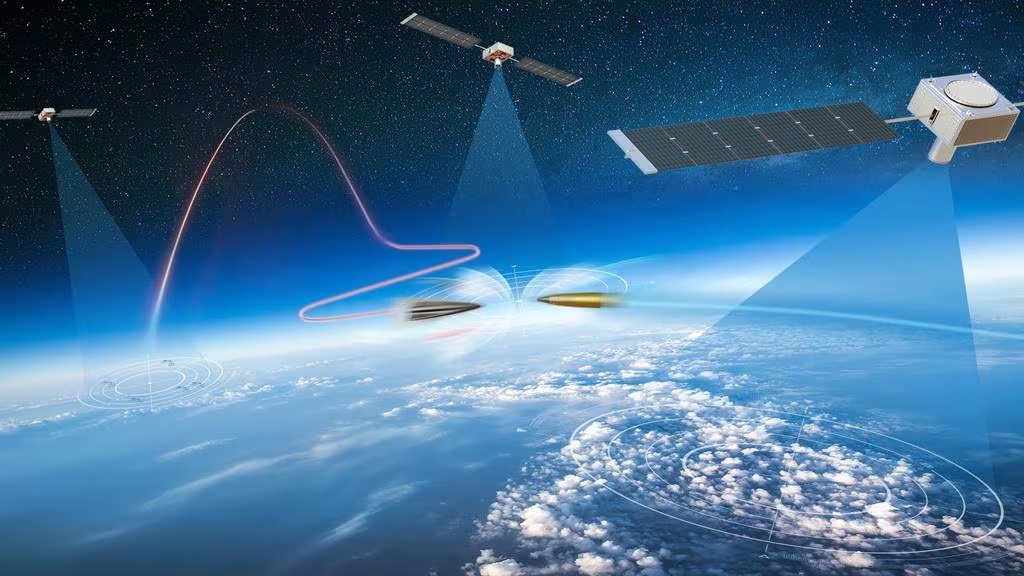Hypersonic Weapons Challenge Pentagon Tracking Capabilities : Reports

Defense News - On December 18, a recently released study has illuminated potential hurdles in the Pentagon ambitious project to deploy a network of space sensors dedicated to detecting and tracking hypersonic missiles. Conducted by the Center for Strategic and International Studies, the study relies on internal modeling and simulations to pinpoint areas of improvement in the proposed network. Titled "Getting on Track: Space and Airborne Sensors for Hypersonic Missile Defense," the report aims to spark a conversation about addressing the challenges associated with countering these highly maneuverable missile threats.
The study acknowledges the inherent difficulty in designing a flawless sensor architecture and emphasizes the need for continuous refinement. Hypersonic weapons, capable of flying at speeds exceeding five times the speed of sound, pose a unique challenge due to their rapid velocity and unpredictable flight paths, making detection and tracking a complex task.
A key aspect highlighted in the report is the Defense Department investment in a multi-layered system of missile-tracking sensors. It underscores the significance of advancing technology for sensor fusion, the process of combining data from various sensors to create accurate tracks. This is crucial to prevent confusion, as a fast-traveling missile can resemble multiple objects.
While acknowledging the substantial investment by the DoD in space sensors as a cornerstone of hypersonic defense architecture, the report cautions that technical challenges remain. Infrared and electro-optical sensing technologies are mature, but tracking hypersonic missiles is more challenging than traditional ballistic missile warning systems. The report compares the difficulty to tracking a slightly brighter candle in a sea of candles, requiring extensive testing for validation.
Masao Dahlgren, the author of the report, emphasizes the importance of "fire control" data precise enough to guide an interceptor accurately. The quality of this data directly influences the interceptor maneuverability and cost. The report suggests that having more precise data could lead to more cost-effective interceptors.
Another critical concern highlighted is the process of sensor fusion, analogous to the challenges faced by autonomous vehicles. The report draws parallels, explaining that, similar to cars using multiple sensors for navigation, missile defense requires merging data from multiple satellites to form a comprehensive target track.
The study raises questions about the future low Earth orbit architecture being developed by the Space Development Agency, which plans to deploy dozens of tracking satellites. The challenge lies in effectively fusing data from multiple sources into a common operating picture, with the capacity for sensor fusion becoming a potential bottleneck.
Addressing coverage tradeoffs, particularly in the Indo-Pacific region where Chinese hypersonic missiles might be deployed, the report suggests various orbit architectures, each with its pros and cons. It underscores the need for careful consideration of factors such as coverage, persistence, and cost when deploying satellites in low Earth orbit (LEO), medium Earth orbit (MEO), geostationary orbit (GEO), or highly elliptical orbit (HEO).
The study concludes by emphasizing the complexity of sensor fusion as a critical engineering challenge and urges stakeholders to carefully weigh the tradeoffs for effective hypersonic missile defense. It provides valuable insights into the technical challenges and considerations that the Pentagon must address as it advances its hypersonic defense initiatives. Funding for the study was provided by industry leaders, including General Atomics, L3Harris, Leidos, and Lockheed Martin.



